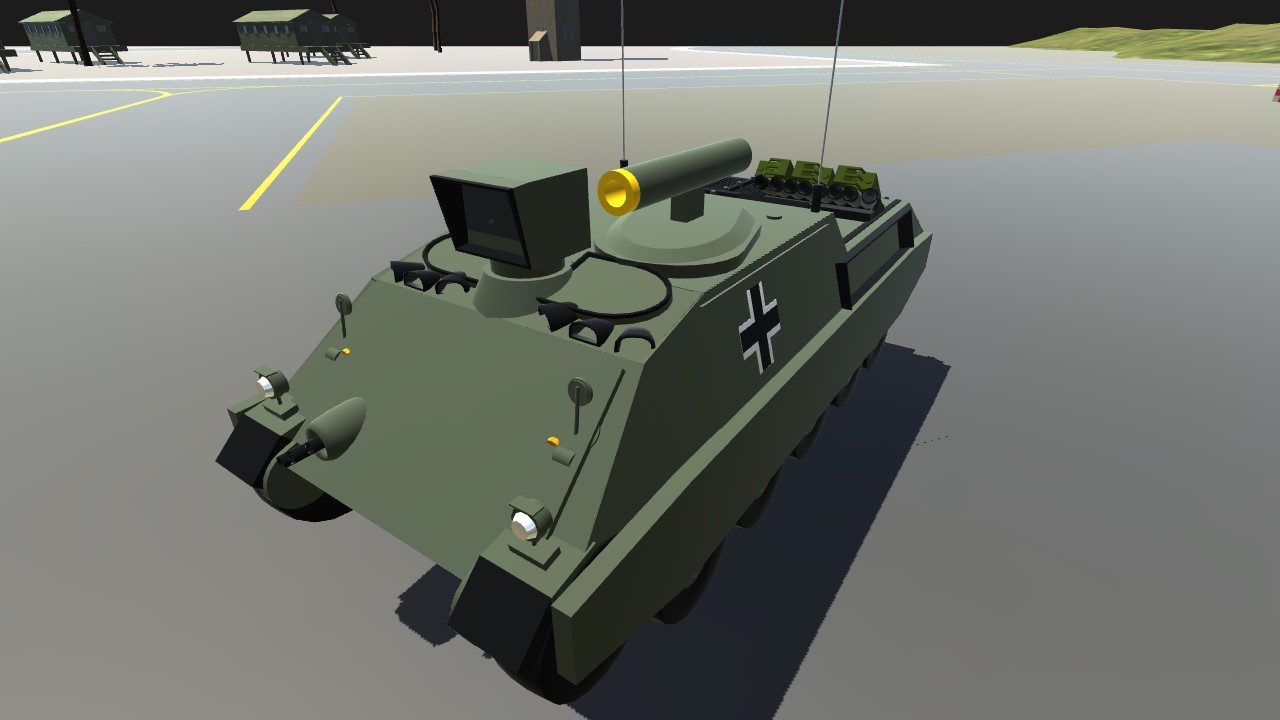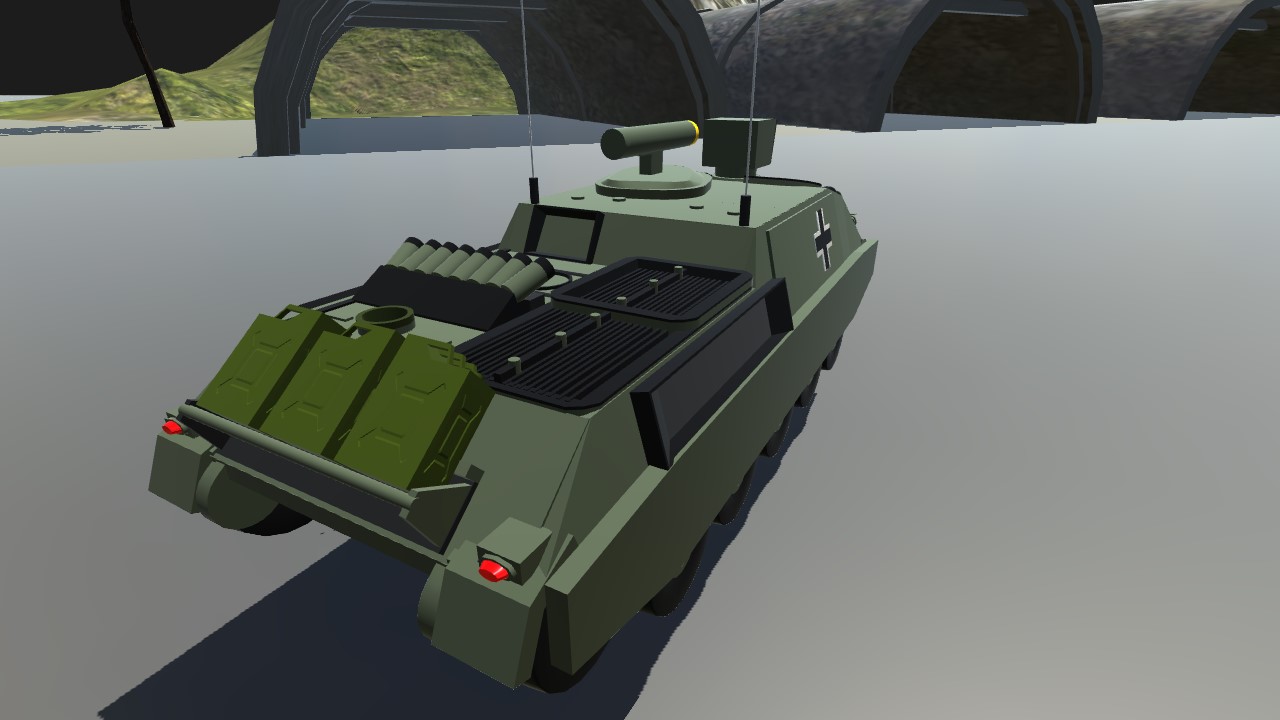VTOL down - turn the drum. Groups 1/3 to raise rockets TRIM. Group 5 - control the sight with the mouse. Group - 8 turn off the engine. LandingGear - lift hatches.
----------------------------------------------------------------------------------------------------------------
The vehicle prototypes were developed between 1963 and 1965 and between 1967 and 1968, Henschel and Hanomag built 318 Raketenjagdpanzer 2 for the Bundeswehr. Starting around 1978, 316 of them were upgraded with additional armour and a new missile system, and redesignated as Raketenjagdpanzer Jaguar 1.
Armament[edit]
The vehicle was armed with two launch rails for the Nord SS.11 antitank guided missile, and two MG3 machine guns. The machine guns were mounted in the bow and as an anti-aircraft weapon on top of the vehicle. The Raketenjagdpanzer 2 carried fourteen missiles, twelve of which were mounted in containers inside the vehicle while the other two were attached to the launch rails. The combined traverse of both launch rails covered 180 degrees. The vehicle's mission was to engage enemy tanks at ranges between 1.5 and 3 kilometers where the range and accuracy of tank cannon were inferior to that of the SS.11 missile. The maximum effective range of the SS.11 was around 3,000 meters. The SS.11 missile could penetrate 60 centimeters of rolled homogeneous armour.
Service in the Bundeswehr[edit]
The Bundeswehr first operationally deployed the Raketenjagdpanzer 2 in 1967. From 1968 forward, the tank destroyer companies of the Panzergrenadier (armored infantry) brigades were equipped with eight of these vehicles. At the same time, tank destroyer companies of the Panzer brigades received thirteen Raketenjagdpanzer 2. Between 1978 and 1982, the Raketenjagdpanzer 2 vehicles were upgraded to Euromissile HOT-carrying Jaguar 1 tank destroyers.
Specifications
General Characteristics
- Predecessor Raketenjagdpanzer II
- Created On Windows
- Wingspan 10.8ft (3.3m)
- Length 27.3ft (8.3m)
- Height 16.9ft (5.1m)
- Empty Weight 47,228lbs (21,422kg)
- Loaded Weight 49,705lbs (22,545kg)
Performance
- Wing Loading 3,078.5lbs/ft2 (15,030.6kg/m2)
- Wing Area 16.1ft2 (1.5m2)
- Drag Points 7711
Parts
- Number of Parts 354
- Control Surfaces 0
- Performance Cost 1,498







This thing deserves way more upvotes than it has. It's very well done.